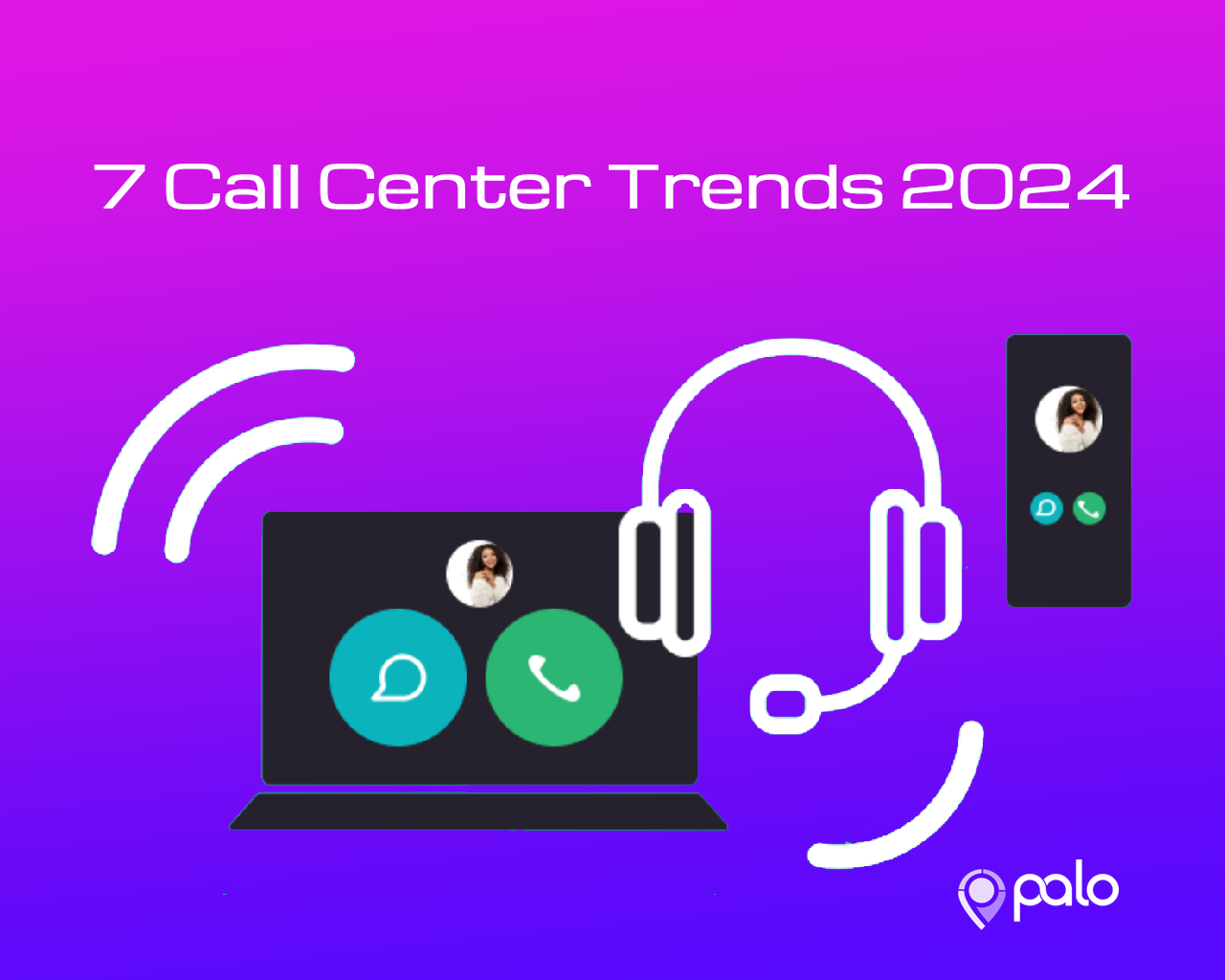
IVR Best Practices: Tips to Improve Your Customer Experience
Not every caller enjoys interacting with your interactive voice response systems (IVRs). Some are less receptive of the idea following prompts with the belief that they will have their issue resolved successfully at the end of it.
A recent study reported that 83% of consumers said IVRs offered no benefit and were nothing but a cost-saving opportunity for businesses. It shows that consumer sentiment towards IVR systems remains overwhelmingly negative.
Since IVRs are a business’s first point of contact, you must ensure everything is on point to win over your customers. Your menu options and routing must be smooth and seamless.
Today, we discuss the top ten IVR best practices to improve your call automation systems and provide a better customer experience.
1. Create a Simple and Clear IVR Menu
Callers are unlikely to have a good user experience if they cannot easily reach the needed agent or department.
You can ensure they access the service, information, person, or department they need without speaking to a representative by making your IVR menu easy to navigate.
Keep your menu options simple and clear, so callers are not confused about what buttons to press. Doing this can improve customer satisfaction, boosting sales and your overall bottom line.
2. Offer the Option to Speak with a Live Agent
Many businesses do not allow callers to speak to live agents immediately. They prefer giving customers the chance to use self-service alternatives.
However, locking callers in an IVR “prison” where they must listen to long menu lists or marketing gimmicks and cannot speak to an agent is the worst thing you can do to them.
Doing this frustrates them, that they hang up, and you might lose their trust. Instead, allow callers to speak with an agent quickly.

Have the option of speaking to a live agent if your IVR system lacks a feature that they want.
Remember that not everyone can use your system efficiently or understand what menu option to select, no matter how clear your menu options are.
Moreover, some customers feel uncomfortable expressing their concerns through the IVR system.
Therefore, ensure customers can speak with a live agent who can promptly assess their needs, address their problems, or redirect the call to the right person in such circumstances.
3. Use a Realistic-Sounding Voice
You must have encountered some IVR systems with unnatural voices and perhaps a couple with completely robotic voices. In any case, you probably did not like the experience as the caller.
This applies to your customers, too. They become pessimistic when their call starts with a voice that appears to come from an old-fashioned IVR system.
For this reason, use high-quality voices in your IVR system. A realistic voice makes communication with your callers flow more naturally.
It also helps allow smoother responses by making callers feel more relaxed because the voice sounds like an actual customer service representative.
You can use human voice talent, text-to-speech (TTS) voices, or a blend of the two for your IVR system. Pick the one that best suits your industry, business, and target audience.
4. Use Wait Times for Promotions
You can earn customers’ trust during the brief wait time before connecting them to an agent or their preferred menu option.
Instead of making customers listen to long ads when waiting, which would probably work against you, you can use the wait period to play brief marketing ads like:
- Promoting new services or products
- Endorsing your email newsletter
- Sharing seasonal promotions
- Informing callers of discounts and other sales offers

That means you will use callers’ wait time to help you achieve your company goals instead of just playing elevator music.
5. Encourage Users to Interact on Other Channels
Using such tools as call forwarding can help reduce hold times and maintain a positive caller experience. Still, you may utilize this short window of opportunity to invite callers to interact with your business on other platforms, such as:
- A chatbot on your website, which you can easily integrate using builder programs
- Messaging applications like WhatsApp and Telegram
- Social media sites that your business uses for communication.
You can even alternate your marketing messages with educational ones that inform customers of the estimated wait time to prevent them from getting impatient as you promote your other communication channels.
6. Include an On-Site FAQ Page
Having an on-site FAQ page where customers can be redirected to find answers to their queries is a fantastic idea that can improve user experience.
An FAQ page can drive traffic to your website and enable you to offer more value in the form of information and materials that can help customers address their concerns faster.

It is also great for launching a blog for your business or brand. You can use it to provide broad answers and link them to blog posts with more detailed information.
That is an excellent tactic for getting customers from calling and exploring your website instead, where they can get more details about your business and buy anything after clicking on display ads or affiliate links.
7. Offer Speech and Keypad Options
You can optimize the user experience by offering speech and keypad options on your IVR system. That lets customers decide whether to respond with a speech command or click the numerical option on their mobile device.
Speech and keypad options work well when you get calls from people whose accents or dialects are difficult for your system to understand.
Each caller is more likely to reach the desired endpoint quickly when switching from a speech to a numerical press menu.
8. Include a Callback Option
A callback option is another IVR best practice you cannot overlook in your system.
A callback option implies that you value your callers’ time, and instead of making them wait, you will call them back as soon as a live agent is free.

Customers can continue their daily activities while still on the line to talk with an agent instead of being put on hold for a long time.
The callback option can be a valuable strategy for companies that handle high call volumes every day and have long wait times.
9. Install a Smart IVR System
Installing a smart IVR system that records caller data and inputs is another way to optimize user experience. A smart IVRs asks customers questions whenever they call to know where to route the call.
For example, IVR systems ask the caller for their phone number or email address related to that account.
However, once a customer is routed to an agent, they may find it unpleasant to provide this information again so the agent can look into their account.
So, to improve user experience, install a smart IVR that stores customer details automatically and avails them to the live agent, saving the caller from repeating themselves.
Equipping agents with the information they need to assist customers gives your customers the impression that you genuinely pay attention to them and makes your company appear more professional.
10. Analyze and Update Your IVR Menu
Caller analytics and surveys are excellent tools to understand why customers want to contact your business.
You could add a brief survey after every call to measure the satisfaction of each caller. The acquired information can provide practical knowledge that will enable you to increase the general efficacy of your IVR system.
Regularly analyze the data your IVR system provides to update all facets of the menu.
For instance, if you notice that many customers abandon calls during the fourth or fifth-level options, you can think about reducing your menu options to encourage more people to complete the process.

Luckily, many IVR systems available today come pre-installed with analytics dashboards for better business phone capabilities.
That even makes your job of gathering crucial information and identifying exactly where clients are having problems with your IVR menu easier.
You might even discover devices with AI capabilities and other modern technology to provide more powerful caller analytics.
Final Thoughts
Transforming consumer opinion on IVR systems should begin with a user-centric strategy. More needs to be done before the public fully embraces IVR systems like other web and mobile apps, but it can be possible when created with the user in mind.
At PALO, we believe in running profitable pay-per-call campaigns that help businesses scale. Our strategy is based on using technology to help our clients realize their full potential. We assess every IVR system thoroughly before implementing it.
Contact us today to learn more about our business model and how we can help you scale profitably.






